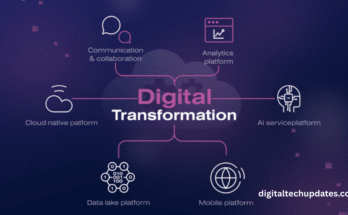In an increasingly connected world, cybersecurity has become a paramount concern for individuals and organizations alike. As technology continues to evolve, so do the methods employed by cybercriminals. In 2024, businesses and individuals face an array of sophisticated cyber threats that can compromise sensitive information, disrupt operations, and cause significant financial losses. This article explores the top cybersecurity threats of 2024 and offers insights into how to protect yourself and your organization from these dangers.
1. Ransomware Attacks
Ransomware remains one of the most pervasive and damaging threats in the cybersecurity landscape. In 2024, cybercriminals are employing more advanced tactics, targeting critical infrastructure and larger enterprises with the intention of extorting hefty ransoms. The evolution of ransomware-as-a-service (RaaS) platforms has made it easier for even amateur hackers to launch devastating attacks. Organizations must prioritize robust data backup strategies and invest in comprehensive security solutions to mitigate the risk of ransomware.
Key Prevention Measures:
- Regular Backups: Maintain regular, offline backups of critical data to reduce the impact of a ransomware attack.
- User Training: Educate employees about phishing scams, as ransomware often spreads through malicious email attachments or links.
- Endpoint Security: Implement advanced endpoint protection solutions that detect and respond to suspicious activities in real time.
2. Phishing Scams
Phishing remains a prevalent threat in 2024, with cybercriminals using increasingly sophisticated techniques to trick users into divulging sensitive information. Spear phishing, where attackers tailor messages to specific individuals, has become particularly effective. The rise of deepfake technology has added a new layer of complexity, allowing attackers to create convincing audio and video impersonations.
Key Prevention Measures:
- Email Filtering: Use advanced email filtering solutions to block suspicious messages before they reach users.
- Multi-Factor Authentication (MFA): Implement MFA to add an extra layer of security, making it more difficult for attackers to gain access to accounts.
- User Awareness Training: Conduct regular training sessions to help employees recognize phishing attempts and understand the importance of verifying requests for sensitive information.
3. Supply Chain Attacks
Supply chain attacks have gained notoriety in recent years, and they continue to pose a significant threat in 2024. Cybercriminals exploit vulnerabilities in third-party vendors to gain access to larger organizations. Notable incidents like the SolarWinds breach have highlighted the risks associated with interconnected systems.
Key Prevention Measures:
- Vendor Risk Assessment: Conduct thorough assessments of third-party vendors and their cybersecurity practices before entering into partnerships.
- Network Segmentation: Implement network segmentation to limit access to sensitive data, reducing the impact of a potential breach.
- Incident Response Plans: Develop and regularly update incident response plans to ensure a swift reaction to any detected supply chain vulnerabilities.
4. Internet of Things (IoT) Vulnerabilities
The proliferation of IoT devices has created new attack vectors for cybercriminals. Many IoT devices lack robust security features, making them easy targets for hackers. In 2024, threats related to unsecured IoT devices are expected to increase, leading to unauthorized access to sensitive data and network breaches.
Key Prevention Measures:
- Secure Device Configuration: Ensure that IoT devices are securely configured, with default passwords changed and unnecessary features disabled.
- Network Monitoring: Employ network monitoring tools to detect unusual activity associated with IoT devices.
- Regular Updates: Keep IoT devices updated with the latest firmware and security patches to address known vulnerabilities.
5. Insider Threats
Insider threats can be just as damaging as external attacks, and they remain a significant concern for organizations in 2024. Employees with access to sensitive information can intentionally or unintentionally compromise data security. Whether due to malicious intent or human error, insider threats can result in substantial financial and reputational damage.
Key Prevention Measures:
- Access Controls: Implement strict access controls to ensure that employees only have access to the data necessary for their roles.
- Behavioral Monitoring: Utilize user behavior analytics (UBA) tools to detect unusual activity patterns that may indicate insider threats.
- Incident Reporting: Establish a culture of transparency where employees feel comfortable reporting suspicious activities without fear of repercussions.
6. Artificial Intelligence (AI) in Cybercrime
The rise of artificial intelligence has provided cybercriminals with powerful tools to launch sophisticated attacks. AI can automate and enhance phishing campaigns, enabling attackers to scale their efforts and bypass traditional security measures. In 2024, we can expect to see more cyber threats powered by AI, making it essential for organizations to adapt their defenses accordingly.
Key Prevention Measures:
- AI-Powered Security Solutions: Invest in AI-driven security tools that can detect and respond to threats in real time.
- Threat Intelligence Sharing: Collaborate with industry peers to share threat intelligence and stay informed about emerging AI-driven threats.
- Continuous Training: Provide ongoing training for employees to help them recognize and respond to AI-generated attacks.
7. Cloud Security Risks
As more organizations migrate to the cloud, security risks associated with cloud services continue to rise. Misconfigurations, inadequate access controls, and lack of visibility can lead to data breaches and compliance violations. In 2024, ensuring cloud security will be a critical aspect of any organization’s cybersecurity strategy.
Key Prevention Measures:
- Cloud Security Posture Management (CSPM): Implement CSPM tools to continuously monitor and assess cloud configurations for potential vulnerabilities.
- Identity and Access Management (IAM): Employ IAM solutions to control access to cloud resources and ensure that only authorized users can access sensitive data.
- Regular Audits: Conduct regular audits of cloud environments to identify and remediate potential security gaps.
Conclusion
As we navigate through 2024, the landscape of cybersecurity threats continues to evolve. Organizations and individuals must remain vigilant and proactive in their approach to safeguarding digital assets. By understanding the top threats and implementing effective prevention measures, you can significantly reduce the risk of cyberattacks and protect sensitive information from falling into the wrong hands. Prioritize cybersecurity as an ongoing process rather than a one-time effort to stay ahead of the ever-changing threat landscape.




